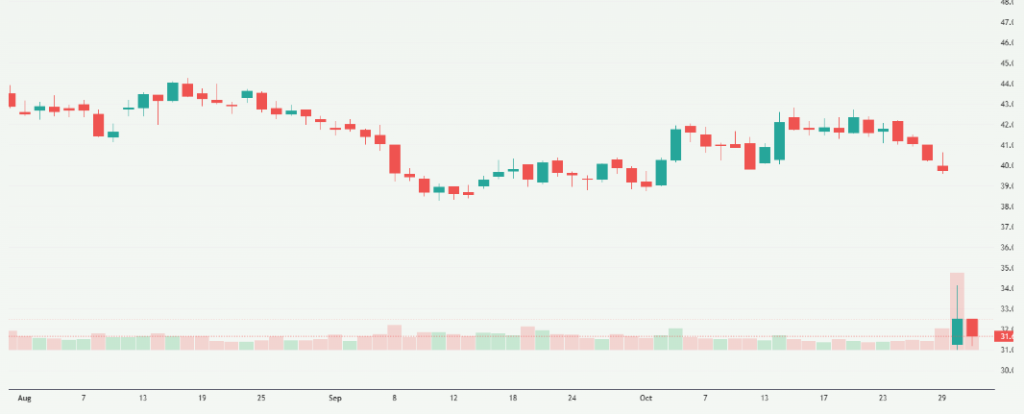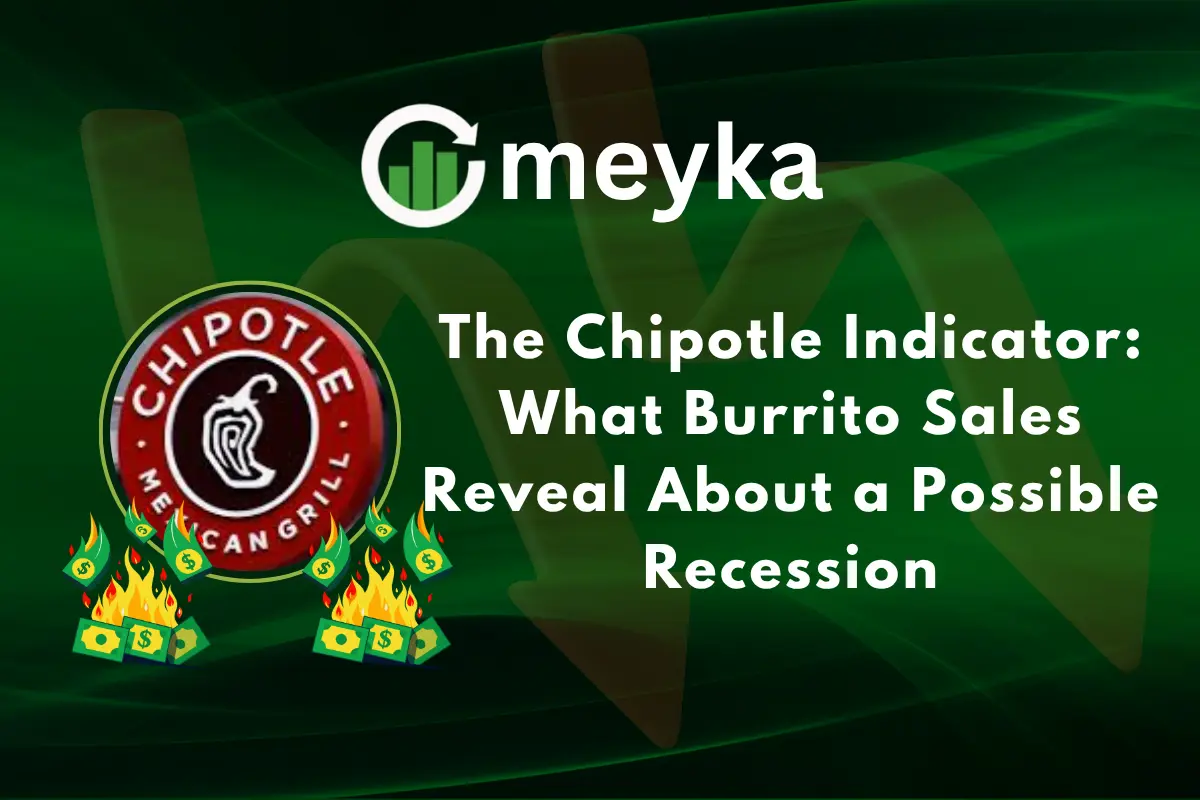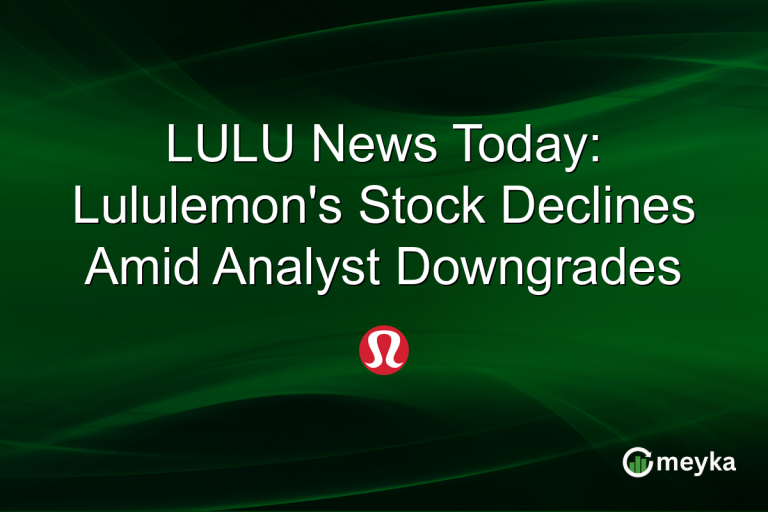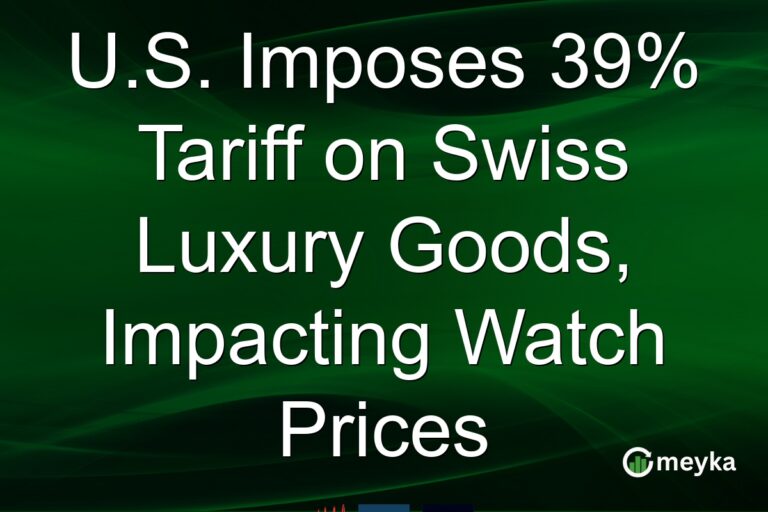The Chipotle Indicator: What Burrito Sales Reveal About a Possible Recession
In October 2025, the fast-casual chain Chipotle Mexican Grill reported that many of its core customers’ households earning under $100,000 are eating out less. This shift matters because Chipotle serves millions of people who make weekly choices about spending. When they pull back, it may signal something bigger. That’s where the so-called “Chipotle Indicator” works. It’s the idea that trends at a popular burrito chain can act as a rough barometer of the broader U.S. economy.
When visits and sales drop at Chipotle, it hints that consumers may be tightening their belts. And when middle-income diners hold off, retail, travel, and services often feel it next. In short, if even Chipotle’s burritos start getting skipped, the warning lights for a recession may be flickering on.
The Origin of the “Chipotle Indicator”
The idea started with a simple observation. Investors and reporters noticed that Chipotle’s traffic and sales often move before broader consumer data changes. Chipotle serves many middle-income diners. Those customers tend to cut back quickly when budgets tighten. Over time, analysts began treating Chipotle’s same-store sales and visit trends like an informal economic signal.

The company’s own Q3 2025 results, announced on October 29, 2025, forced a brighter spotlight on this idea. The report showed flat comparable-restaurant growth and falling transactions. That shift made the “Chipotle Indicator” a much-discussed topic in business circles.
Why Chipotle Reflects Economic Trends?
Chipotle sits in the middle of the fast-food and casual-dining worlds. Prices are higher than a value burger. Yet Chipotle is cheaper than full-service. This puts the chain in a position to reveal how middle earners behave. When food costs and bills rise, visits fall first in this price tier. Chipotle’s business mixes price sensitivity and convenience.
Digital orders and loyalty programs push repeat visits. But falling transactions signal that diners are choosing groceries or cheaper outlets. The company’s third quarter showed a higher average check, but fewer transactions, a textbook sign of buyers trimming frequency rather than spending per visit.
Case Studies: Burrito Sales and Economic Cycles
2008: During the Great Recession, growth slowed for many fast-casual brands. Chipotle was young then. Slower expansion and weaker visits showed that even beloved chains are vulnerable when jobs and incomes fall.
2021-2023: The pandemic and stimulus era boosted eating out. Chipotle saw strong gains in digital sales. But by 2022-2023, high inflation began to erode that rise. Customers traded down or cut visits. Many chains tightened guidance. Analysts flagged this as a returning focus on essentials.
2025: In the third quarter ending September 30, 2025, revenue rose 7.5% to $3.0 billion. Despite that, comparable restaurant sales grew only 0.3%. Transactions dropped by 0.8% and digital sales accounted for about 36.7% of food revenue. Management then trimmed its full-year same-store sales outlook to a low single-digit decline. The company also reported weaker visits among 25-35-year-olds and people earning under $100,000. Those facts gave fresh weight to the Chipotle Indicator as a warning sign.
What Burrito Sales Reveal About Consumer Behavior?
Burrito purchases show two things. First, they show frequency. People who stop buying a weekday burrito often skip other small luxuries too. Second, they show trade-offs. Higher bills push shoppers to swap prepared meals for grocery cooking. Chipotle’s data suggest customers are still hungry for convenience. But many prefer to cut how often they buy it. That pattern can ripple across retail and services. When a large group trims routine restaurant visits, overall consumer spending slows. This makes the Chipotle Indicator useful as a quick check on everyday demand.
The Broader Economic Message
The Chipotle Indicator does not replace traditional metrics. It complements them. CPI, payrolls, and retail sales show the full picture. Chipotle’s trends add a human layer. The company’s margins also tell a story. If food inflation forces price hikes, but transactions fall, margins can compress. That combination of higher input costs and weaker demand is a classic stress test for the economy.

Investors watched Chipotle’s share price tumble sharply after the October 2025 update. That market reaction reflected concern that middle-income spending may be slowing more widely. Some analysts use AI tools to scan retail and restaurant patterns for early signals, and Chipotle’s data often appears in those models.
Limitations of the “Chipotle Indicator”
This indicator has limits. Correlation is not causation. Chipotle is a single brand. Company decisions matter too. New menu items, loyalty pushes, or marketing can change traffic regardless of the economy.
Regional supply issues, like beef or avocado price swings, can also distort results. And different demographics respond differently. A drop in Gen Z visits might not mean older age groups will follow. Therefore, the Chipotle Indicator works best as one voice among many. It signals caution, not certainty.
Final Words
Chipotle’s sales and visits are a clear, readable data point. The Q3 2025 update on October 29, 2025, showed how fragile middle-market demand can be. When frequency falls, other sectors often feel it next. The Chipotle Indicator should be used with care. It should be read alongside hard economic measures. Still, when customers skip a familiar burrito, that choice is worth noting. It may hint at bigger shifts in spending, and at times, it has offered an early nudge toward worry.
Frequently Asked Questions (FAQs)
The Chipotle Indicator links changes in Chipotle’s burrito sales to consumer spending. When sales drop, it may hint at weaker demand. Analysts discussed it widely in October 2025.
When people buy fewer burritos, it shows they are saving money. This spending slowdown, seen in Chipotle’s October 2025 report, can signal early signs of a coming recession.
Analysts track Chipotle because it serves many middle-income customers. Their eating habits reflect real spending behavior, making the brand a useful guide for economic health in 2025.
Disclaimer: The content shared by Meyka AI PTY LTD is solely for research and informational purposes. Meyka is not a financial advisory service, and the information provided should not be considered investment or trading advice.






